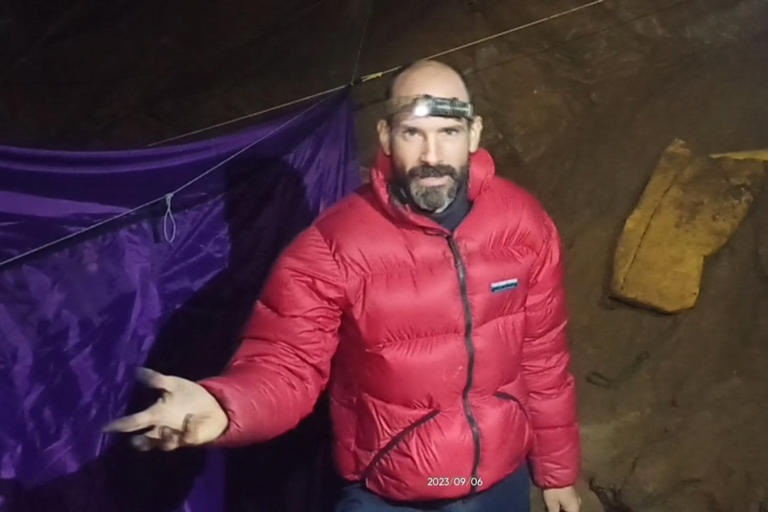Seriously Ill Researcher Rescued from Cave System after Nine Days
An international team of rescuers successfully brought a seriously ill cave researcher up from a cave system in southern Turkey on Tuesday.
The 40-year-old American cave researcher had been stranded more than 1000 meters underground in winding and subterranean passages near the Taurus Mountains for nine days.
This was reported by the Turkish Cave Association, according to the news agency AFP.
The researcher was located at a depth of 1120 meters underground during an expedition when he suffered internal abdominal bleeding.
According to the officials in charge of the rescue operation, it has been one of the largest and most complicated underground rescue operations ever carried out.
More than 200 rescuers, doctors, and expedition participants contributed to the effort to bring the critically ill cave researcher up from the cave system.
Initially, the researcher was so ill that doctors had to descend into the cave system to administer blood transfusions. As the researcher improved, the process of moving him out of the cave system began. Subsequently, the researcher was strapped onto a stretcher, which was vertically lifted using a rope through very narrow cave passages.
To make space for the stretcher, the rescue team had to blast open narrow cave passages at several points.
According to local emergency services, the cave researcher’s health is improving.
“He is generally in good health. We continue to administer fluids to him,” said Cenk Yildez, the head of the local emergency service in the area.
In a video recorded from the cave system last Wednesday, the cave researcher thanked the Turkish government for its assistance.
“In my belief, my life was saved due to the quick response from the Turkish government, which provided the medical assistance I needed,” he said.
According to the European Cave Rescue Association (Ecra), the 40-year-old cave researcher is an experienced scientist with many expeditions under his belt.
“He is a well-known figure in the international speleological (science of caves, ed.) community,” said the association.
The successful rescue operation has brought relief to the cave researcher’s family, friends, and colleagues across the globe. The dedication and expertise demonstrated by the rescue team and the support from the Turkish government have been critical in saving a valuable member of the scientific community. The researcher’s experience and contributions make him a significant figure in the field of cave exploration.
The rescue also highlights the importance of preparedness and safety measures when engaging in hazardous expeditions. Cave exploration, although fascinating, can pose serious risks and require efficient emergency response systems. This incident serves as a reminder for researchers and adventurers to prioritize safety protocols during exploratory missions.
As the cave researcher gradually recovers, it is expected that he will continue to share his expertise and contribute to the scientific understanding of caves and subterranean environments. The successful rescue operation serves as a testament to the power of international collaboration and demonstrates the unwavering commitment to preserving life, no matter the challenges involved.













































